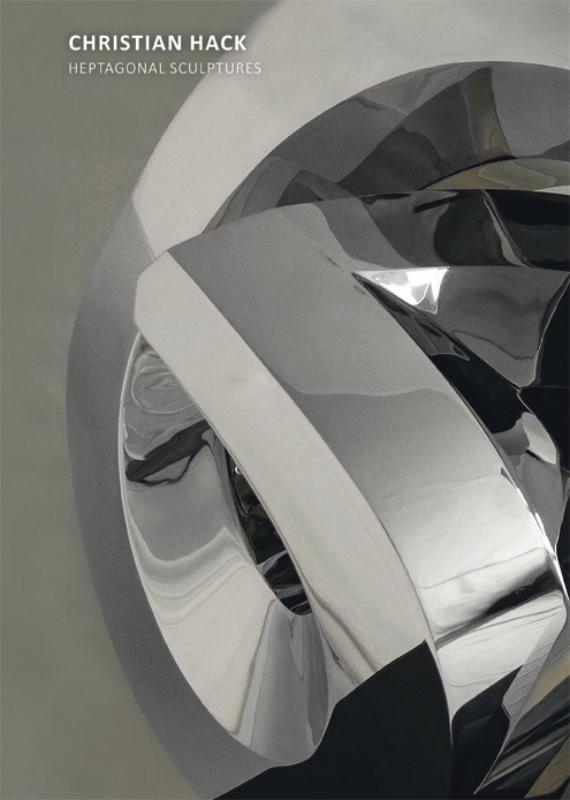- Andere Talen
- Multilanguage Boeken
- CHRISTIAN HACK - HEPTAGONAL SCULPTURES
HILLEBRANDT, REGINA VON
CHRISTIAN HACK - HEPTAGONAL SCULPTURES
17,50incl BTW
Vertrouwd sinds 1927
Persoonlijke aandacht en advies
Vanaf 17,50 gratis verzenden NL & BE
Meer dan 150.000 artikelen online
Omschrijving CHRISTIAN HACK - HEPTAGONAL SCULPTURES
Even in his early work, which I first experienced when I visited his studio in 1994, you can find the origin for what are now his actual heptagonal sculptures (seven sided). To develop an artist''s own distinct signature is a lifelong process and has
many forks in the road. Christian Hack''s determination to find his way is both, relentless and admirable. This book shows an incredibly creative and energetic sculptor who has found his ''voice'' and is not about to stop.
Looking at his work
in Plexiglass which he made during his studies at the renowned Folkwang Schule in Essen, Germany (1971-1976), you can see his initial fascination with light and reflection. Now, his current polished stainless steel sculptures can be aesthetically ple
asing and at the same time reflecting our surroundings and playing with our own reflections.
His work in the nineties in bronze and cast-iron would prove to be invaluable for his later understanding of material, surface and reflection. It taught
him how to work from a drawing or a plaster model and turn it into an actual sculpture. His fascination for Spanish sculptor Julio Gonzalez (1876-1942) would help him find his direction and teach him how to dissect his own sculptures. Choosing the be
st element or feature and building on from there; reducing, condensing, creating his archive of ''white models'' which would later prove to be the basis for infinite new sculptures.
In 2001 the Basque sculptor, Eduardo Chillida (1924-2002)
would inspire him to even further reduce his form language and create the possibility to work with simpler materials on a larger scale. In the next ten years small bronzes would evolve into monumental Corten-steel sculptures for the public space./>In 2013 a renewed interest in his ''old'' seven and five sided forms (to be part of an exhibition in Dubai) inspired Christian Hack to review some of his older works and found himself "beflugelt" - on wings - to pick up where he had left off at th
e end of the nineties and completely focus on this rediscovered form language.
Now, after many years of experiencing how to translate his ideas and models in "lighter" materials like aluminium and stainless steel, Christian Hack has the exhilar
ating feeling that even technically there is no end to his possibilities. "Von der Kleinform bis zur Megaform, alles ist moglich", from small to mega size - everything is possible.
Every new design, every new model surprises him, making him more
confident that he finally has found his very own, unique way of expression. His perseverance and trust in this lifelong process with many forks in the road, which seemed to have their own logic, finally paid off.
Jeroen Dijkstra - Livingst
one gallery
many forks in the road. Christian Hack''s determination to find his way is both, relentless and admirable. This book shows an incredibly creative and energetic sculptor who has found his ''voice'' and is not about to stop.
Looking at his work
in Plexiglass which he made during his studies at the renowned Folkwang Schule in Essen, Germany (1971-1976), you can see his initial fascination with light and reflection. Now, his current polished stainless steel sculptures can be aesthetically ple
asing and at the same time reflecting our surroundings and playing with our own reflections.
His work in the nineties in bronze and cast-iron would prove to be invaluable for his later understanding of material, surface and reflection. It taught
him how to work from a drawing or a plaster model and turn it into an actual sculpture. His fascination for Spanish sculptor Julio Gonzalez (1876-1942) would help him find his direction and teach him how to dissect his own sculptures. Choosing the be
st element or feature and building on from there; reducing, condensing, creating his archive of ''white models'' which would later prove to be the basis for infinite new sculptures.
In 2001 the Basque sculptor, Eduardo Chillida (1924-2002)
would inspire him to even further reduce his form language and create the possibility to work with simpler materials on a larger scale. In the next ten years small bronzes would evolve into monumental Corten-steel sculptures for the public space.
e end of the nineties and completely focus on this rediscovered form language.
Now, after many years of experiencing how to translate his ideas and models in "lighter" materials like aluminium and stainless steel, Christian Hack has the exhilar
ating feeling that even technically there is no end to his possibilities. "Von der Kleinform bis zur Megaform, alles ist moglich", from small to mega size - everything is possible.
Every new design, every new model surprises him, making him more
confident that he finally has found his very own, unique way of expression. His perseverance and trust in this lifelong process with many forks in the road, which seemed to have their own logic, finally paid off.
Jeroen Dijkstra - Livingst
one gallery
Specificaties
- MerkVanSpijk
- GroepKUNST ALGEMEEN (640)
- Barcode9789062167593
- LeverstatusActief
Reviews
0.0/5.0
Gemiddelde uit 0 reviews
Meest behulpzame reviews
Nog geen reviews geschreven


